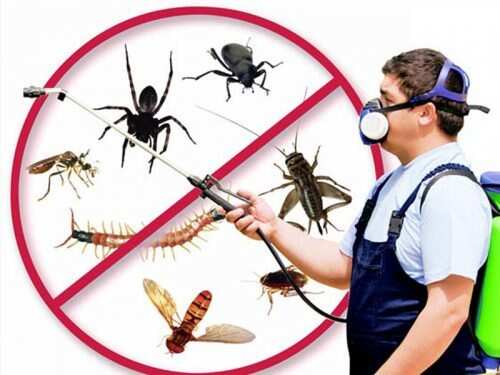The Ultimate Guide To Eco Bed Bug Exterminators Dc
Table of ContentsIndicators on Eco Bed Bug Exterminators Dc You Need To KnowEco Bed Bug Exterminators Dc for BeginnersNot known Details About Eco Bed Bug Exterminators Dc The Single Strategy To Use For Eco Bed Bug Exterminators DcFascination About Eco Bed Bug Exterminators Dc
Because chemicals are toxic, they are also potentially dangerous to human beings, pets, other organisms, and the setting. People that utilize pesticides or frequently come in call with them need to understand the family member poisoning, possible wellness impacts, and preventative steps to decrease exposure to the items they utilize. Danger, or risk, of utilizing pesticides is the possibility for injury, or the level of threat included in making use of a pesticide under a provided set of conditions.
Applicators can minimize or almost remove exposure-- and therefore lower risk-- by following the label directions, making use of personal safety clothes and tools (PPE), and managing the chemical appropriately. For instance, even more than 95 percent of all pesticide exposures come from dermal direct exposure, primarily to the hands and lower arms. By using a pair of unlined, chemical-resistant gloves, this kind of direct exposure can be virtually eliminated.
The unsafe impacts that occur from a solitary direct exposure by any path of access are described "acute results." The four paths of direct exposure are dermal (skin), inhalation (lungs), oral (mouth), and the eyes. Intense toxicity is established by examining the facial poisoning, breathing toxicity, and dental toxicity of examination animals.
Get This Report on Eco Bed Bug Exterminators Dc
Acute toxicity is measured as the amount or concentration of a toxicant-- the a.i.-- required to eliminate half of the animals in a test populace. This procedure is typically expressed as the LD50 (deadly dose 50) or the LC50 (lethal focus 50). In addition, the LD50 and LC50 values are based upon a solitary dose and are tape-recorded in milligrams of pesticide per kilo of body weight (mg/kg) of the guinea pig or partially per million (ppm).
The lower the LD50 or LC50 worth of a chemical item, the higher its poisoning to people and animals. Pesticides with a high LD50 are the least toxic to human beings if utilized according to the instructions on the product tag. The chronic poisoning of a pesticide is identified by subjecting guinea pig to long-term direct exposure to the active component.
The chronic toxicity of a chemical is harder than intense poisoning to establish with laboratory evaluation. Products are categorized on the basis of their relative severe poisoning (their LD50 or LC50 worths). Chemicals that are classified as highly poisonous (Poisoning Category I) on the basis of either dental, facial, or breathing poisoning should have the signal words DANGER and poisonous substance printed in red with a head and crossbones icon plainly presented on the front panel of the plan tag.
The intense (single dosage) oral LD50 for chemical items in this team varies from a trace quantity to 50 mg/kg. For instance, direct exposure of a couple of drops of a material taken by mouth could be fatal to a 150-pound individual. Some chemical products have just the signal word DANGER, which informs you nothing concerning the severe toxicity, just that the item can create severe eye damages or extreme skin irritation
The 4-Minute Rule for Eco Bed Bug Exterminators Dc
In this category, the intense dental LD50 ranges from 50 to 500 mg/kg. A teaspoon to an ounce of this material might be fatal to a 150-pound individual (bed bug exterminator). Chemical items identified as either a little poisonous or relatively harmless (Poisoning Classifications III and IV) are required to have the signal word CAUTION on the chemical tag

All pesticide toxicity chemical, worths the LD50, can be found on the product's Item Safety Data Safety and security (MSDS). Pesticide tags and MSDS can be obtained from merchants or produces - https://www.goodreads.com/user/show/176614165-christopher-savage. The signs of chemical poisoning can vary from a mild skin inflammation to coma or even fatality.
Individuals additionally vary in their sensitivity to various degrees of these chemicals. Some individuals might reveal no response to an exposure that may create extreme health problem in others (bed bug exterminator). Due to possible wellness worries, pesticide individuals and handlers need to recognize the typical symptoms and signs of pesticide poisoning. The results, or symptoms, of chemical poisoning can be generally defined as either topical or systemic.
Indicators on Eco Bed Bug Exterminators Dc You Need To Know
Dermatitis, or swelling of the skin, is approved as the most frequently reported topical impact associated with chemical exposure. Some individuals have a tendency to cough, wheeze, or sneeze when revealed to pesticide sprays.
This sign generally subsides within a few mins after a person is removed from the exposure to the toxic irritant. However, a response to a pesticide item that creates a person not only to sneeze and cough yet likewise to develop serious acute respiratory signs is a lot more likely to be a true hypersensitivity or allergy.
Systemic effects are fairly different from topical effects. They typically take place far from the initial factor of call as a result of the pesticide being blog taken in right into and distributed throughout the body. Systemic impacts typically consist of nausea or vomiting, throwing up, fatigue, migraine, and intestinal problems. In innovative poisoning situations, the individual might experience changes in heart price, trouble breathing, convulsions, and coma, which might cause death.